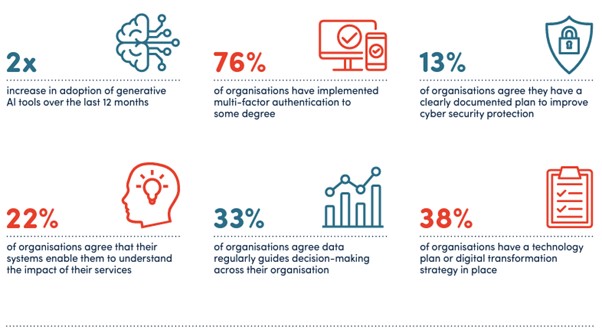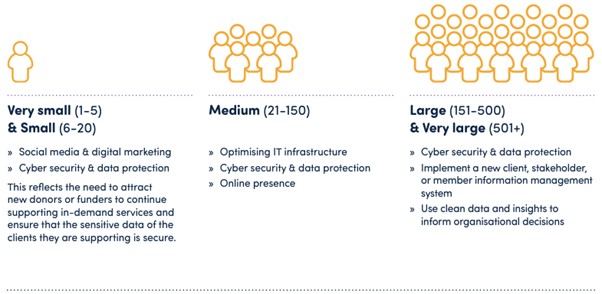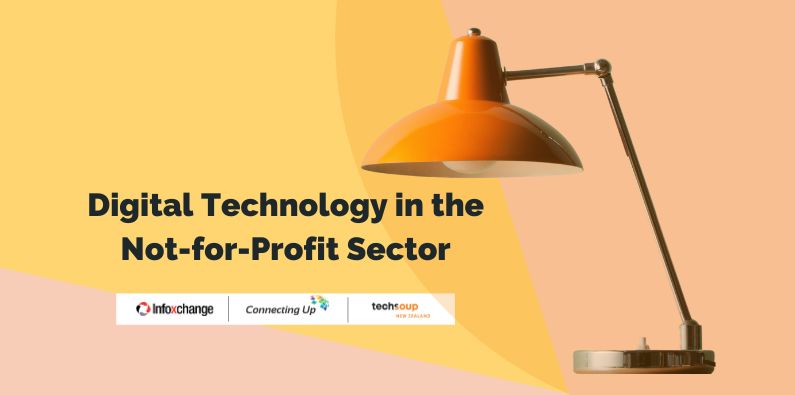The latest Not-for-Profit Technology Report findings are in. Each year Infoxchange conduct the Digital Technology in the Not-for-Profit Sector research project. In its 8th year, the report focuses on key areas of strength, growth and improvement. The aim is to help NFPs use technology in the most proficient way possible and facilitate their mission outcomes.
Infoxchange joined forces with Connecting Up and TechSoup in 2018. Together, there are few organisations that better understand the perspectives and challenges of the sector. Considering this and the fact that this year 1020 organisations participated in the survey, the findings are a compelling representation of the industry.
If you are concerned about your organisation’s digital capability, take this quiz.
What is Covered in Not-for-Profit Technology Report
The research gathered data across Australia and New Zealand based charities with some 1020 organisations participating in the survey. The findings are a compelling representation of the industry.
68% of the organisations surveyed, are classified at very small to small with up to 20 employees at the most. The top three service areas represented were:
- Community development,
- Education,
- And peak body/membership-focused organisations.
As technology has progressed over the years, so have the key areas of the research. In this year’s iteration, the report brings findings on some important points:
- AI (artificial intelligence)
- Cyber Security
- Remote Working
- Information Systems
- Data Management
- Digital Marketing
Infoxchange joined forces with Connecting Up and TechSoup in 2018. Together, there are few organisations that better understand the perspectives and challenges of the sector.
Key Findings of the Not-For-Profit Technology Report
The feedback from the surveys, provides an interesting snapshot on how the NFP sector has used technology over the past 12 months. To give you a overall view of key points:
- 96% of organisations are using or planning to use AI tools in the next year.
- 12% of surveyed parties have experienced a cyber security incident.
- However, less than 40% have implemented multi-factor authentication for all internet-based systems.
- Only 13% have a clearly outlined plan to tackle cyber security risks.
- The biggest challenge appears to be around impact and outcome measurements with difficulty expressed in fully understanding and enabling collection of data.
Overall, it became clear that only 2 in 5 organisations have a digital transformation plan. Considering that staff satisfaction with technology improves by 24% when such a plan is in place, this is a key area for improvement.

Top 3 Technology Priorities for the Sector
Whilst enabling staff and volunteers to work remotely is on the list of requirements, there are other priorities. Particularly, 1 in 4 organisations has added cyber security into their not-for-profit technology focus area. However, here are the top three priorities:
- Improving the organisation’s website is still at the top of the list. Whilst this has slightly decreased over the past three years, there is still a considerable desire to reach this outcome.
- Making better use of social media and digital marketing is high on the wish list too.
- Finally, cyber security practices and data protection are also high on the list.
Also, interesting are a couple of new items that made it onto the list of priorities this year:
- 17% see data and reporting for evidence-based decisions as making a difference to their not-for-profit.
- Whereas 21% would like to find better ways of storing files and information.
Notable is that priorities change significantly depending on the size of the organisation.

Top 3 Not-For-Profit Technology Challenges
As always, there are many challenges faced by the sector and businesses alike. The surveyed NFPs highlighted these as their pain points:
- Finding the budget and funding to achieve the digital transformation is the number one challenge.
- Add staff capacity and capability to roll out the plan is the next obstacle.
- Being able to access affordable and skilled technical resources adds to this task.
There is a swag of issues frustrating NFPs still. For example, getting impartial technical advice, affordable staff training and keeping abreast of changes and knowing where to invest their IT dollars.
Better Utilisation of Not-for-Profit Technology
Do you need help to better utilise your not-for-profit technology? Maybe you would like to improve reporting processes in areas such as budgeting and forecasting? If so, check out the Connecting Up Donation Program, designed for Australian and New Zealand NFPs.
If you operate a small not-for-profit organisation, you may be eligible for free access to Calxa’s Premier reporting software that is part of the Connecting Up Donation Program. Learn more about the Calxa Donation Program and how it can help take your not-for-profit into the future.
About Infoxchange
Infoxchange is a not-for-profit social enterprise that has been delivering technology for social justice for over 30 years. With over 150 staff across Australia and New Zealand, they tackle the biggest social challenges. Through the smart and creative use of technology the reach more than 35,000 government and community organisations.
Working with community, government and corporate partners, Infoxchange focuses on social issues like homelessness, family violence, mental health and disability. They also support indigenous communities, women, youth and family programs.
They have been delivering the findings of the State of Technology in the sector for a number of years now.
